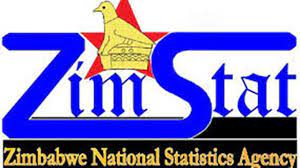
Life
expectancy
refers
to
the
number
of
years
a
person
can
expect
to
live
and
it
is
based
on
an
estimate
of
the
average
age
that
members
of
a
particular
population
group
will
be
when
they
die.
According
to
the
Zimbabwe
National
Statistical
Agency
(ZIMSTAT)
2022
Population
and
Housing
Census
(PHC)
Preliminary
Report
on
Mortality
and
Orphanhood
released
on
Tuesday,
people
live
longer
in
urban
areas
than
in
rural
areas.
The
Report
on
Mortality
and
Orphanhood
was
presented
by
ZIMSTAT
director
general,
Taguma
Mahonde.
He
said:
During
the
height
of
the
HIV,
and
AIDS
pandemic,
Zimbabwe’s
life
expectancy
fell
to
44
years
in
2002.
It
jumped
to
60
in
2012
and
then
now
stands
at
64.7
in
2022.Life
expectancy
at
birth
was
higher
in
urban
areas
(65.5
years)
than
in
rural
areas
(63.3
years).Life
expectancy
at
birth
was
64.7
years
for
both
sexes
combined.Females
had
a
higher
life
expectancy
(68.0
years)
than
males
(61.2
years).
ZIMSTAT
said
the
Crude
Death
Rate
in
2012
was
10
per
1
000
and
in
2022
and
now
it
stands
at
8
per
1000
people.
Crude
death
rate
indicates
the
number
of
deaths
occurring
during
the
year,
per
1000
population.
United
Nations
Population
Fund
Zimbabwe
Programmes
Specialist
for
Population
and
Development,
Piason
Mlambo,
said
life
expectancy
increase
could
be
due
to
the
decrease
in
death
rate.
He
said:
Life
expectancy
is
computed
from
mortality
or
death
rate.
So,
if
the
death
rate
is
coming
down,
from
the
data
which
has
been
presented,
then
life
expectancy
is
increasing.The
explanation
is
life
expectancy
is
increasing
because
the
mortality
or
death
rate
is
decreasing.
Mlambo
said
Zimbabwe’s
population
growth,
which
rose
from
13
million
in
2012
to
15
million
in
2022,
is
attributable
to
health
interventions
such
as
the
introduction
of
ARVs,
alongside
immunisation
and
vaccination.
He
said:
When
life
expectancy
took
a
dip,
which
was
in
2002
when
we
were
at
the
peak
of
our
Aids-related
deaths
and
it
(life
expectancy)
was
at
around
45
years.But
from
there
with
the
introduction
of
ARVs,
people
are
now
living
longer
with
the
condition.Factors
that
are
contributing
to
the
increase
in
life
expectancy
include
the
declining
HIV
prevalence
and
several
coordinated
socio-economic
interventions
involving
scaling
up
of
early
infant
diagnosis
and
access
to
paediatric
ARVs
treatment.
This
has
now
seen
a
gradual
rise
in
life
expectancy.
Post
published
in:
Featured







 Jordan
Jordan
 Ellen
Ellen
